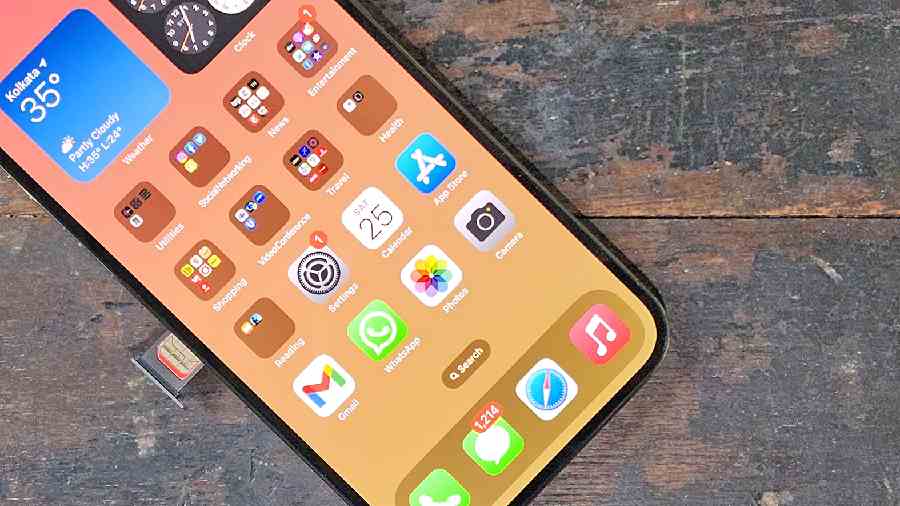You must have been hearing many telecom service providers talk about eSIM. And so are device manufacturers, especially Apple. Embedded SIM or eSIM is a technology that’s being offered by Airtel, Jio and Vodafone and, in the coming years, it will become a norm rather than an exception.
What’s eSIM?
Physical SIM cards need to be inserted into a mobile phone. Now think of a situation where the SIM comes embedded in your handset and it can’t be removed and put into another phone. Here’s the magic of eSIM. It’s rewritable, meaning you can change your network without removing the SIM and inserting a new one.
We are not going to see physical SIM cards go away immediately or even in, say, a year or two. It’s a gradual process. Many are using the eSIM on their dual-SIM handsets as a second SIM. Further, not every phone has an eSIM.
Apple, for example, has been offering eSIM for a few years. In the US, when the iPhone 14 launched late last year, it only came with an eSIM.
Who’s promoting eSIM?
Apple is leading the way. The process works this way. Apple tries to popularise a new technology. Rivals laugh. Rivals take a step back and ponder. They follow. Sooner or later, all smartphone manufacturers will embrace the eSIM across handsets. In this case, it’s not about Apple. The US Federal Communications Commission favours eSIM technology because it’s easier to switch between carriers without visiting a store and there are security benefits.
The advantages
First, it’s easier to switch networks and you won’t have to go looking for a SIM ejector tool to remove/insert a SIM. Second, most countries now have eSIM technology, which means when you are travelling it will be easier to switch to a local network without needing to physically insert a local SIM. Using a local mobile network when you are abroad is cost-effective when roaming charges are considered.

With eSIM, it's easier to switch networks and you won’t have to go looking for a SIM ejector tool to remove/insert a SIM
Third, if the physical SIM card tray is removed then manufacturers can work on the size of the battery. We think it’s a small space but that’s enough to pack in more battery power.
Fourth, if the physical tray disappears, there will be one less opening on the phone and so more protection from moisture and dust, leading to fewer breakdowns.

If the physical SIM tray disappears, there will be one less opening on the phone and so more protection from moisture and dust
Fifth, better security. There is always the chance of losing the phone. Bad players can’t remove an eSIM to take over your phone number and commit identity theft, which is possible with a physical SIM card. In case you lose your iPhone in which the eSIM has been activated, you should be easily able to track the device using the Find My iPhone feature, even when the device is switched off. eSIM cannot be deactivated without unlocking the device. The iPhone is extremely secure and such break-ins are almost impossible.
Also, eSIMS can be easily updated if a vulnerability is found by the carrier. With traditional SIMs, that’s not the case. You can also have multiple accounts or profiles on an eSIM, so if you want to switch between your work number and your personal number in a single device you can do that with eSIMS whereas with SIM cards that’s not easy.
The disadvantages
In India, there are a few drawbacks. First, it takes a couple of hours to transfer an eSIM from one device to another. That’s not the case with a physical SIM. This means, for a short time you won’t receive one-time passwords to get a few work- and finance-related things done. Second, in case you are someone who saves contacts on the SIM, it’s easy to transfer the same to another phone. With the eSIM, you will have to access the same from the Cloud, which is, of course, easier to work with but it takes a few minutes. Third, only a few handsets support eSIM at the moment. Apple and Google, yes. So do Samsung’s flagship models.
